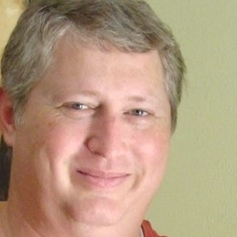New Mega-Church Study Finds Some Interesting Results
Orginally published on Monday, September 15, 2008 at 8:28 AM
by Todd Rhoades
A new study by Leadership Network and Hartford Seminary's Hartford Institute for Religion Research shows that U. S. megachurches continue to strengthen their foothold in the American religious landscape. According to the study, megachurches are having huge impact in all kinds of areas of church life, including: Christian education literature, worship resources and music materials; pastor-training conferences; planting new congregations and spinning off affiliated satellite locations; and hands-on mission trips. Here are more really interesting findings from the study...
Scott Thumma, professor of Sociology of Religion at Hartford Seminary and co-author of “Beyond Megachurch Myths: What We Can Learn from America’s Largest Churches,” says he is not surprised at this development. “Megachurches are highly adaptable and continually innovating their programs and approach to worship and congregational organization as they respond to an ever changing social context,” he says.
This new study focuses on the developing patterns observed across three national surveys done in 2000, 2005 and 2008 in a partnership between Thumma and Warren Bird, Leadership Network’s director of research.
The survey found that some things have not changed. Megachurches (Protestant congregations with average weekly attendance of 2,000 or more) continue to grow in size, lead the way as America’s most multiethnic class of church and emphasize contemporary worship.
But megachurches also are institutions in transition. They offer more worship services in multiple locations, play a greater role in community service and put greater emphasis on the role of small groups.
Areas of Continuity
Contemporary worship style: Not surprisingly, contemporary worship (indicated by electric guitars, keyboards, drums and visual projection equipment) remains the overwhelming norm for worship. In the 2008 study, 78 percent of megachurches thought the term “contemporary” described their worship quite or very well.
Outreach and programming: These churches continue to be highly evangelistic and invitational, with their attendees highly engaged in recruiting others to the church. Megachurches still offer countless programs and opportunities both to be ministered to and to engage in ministry activities toward others.
Finances: Megachurches also continue to garner significant annual incomes. In 2008, the average megachurch income was 6.5 million dollars. This represents nearly a half-million increase over the average in 2005. However, the current income figure actually represents a slight decline of nearly $100,000 when compared to the 2005 study figure after correcting for inflation.
For the first time, the 2008 study inquired how the megachurches spend their money, based on broad categories. While there was considerable variation among the churches reporting, generally about 50 percent of income went to salaries, 25 percent to buildings and 25 percent to missions and programs.
Growth: Megachurches continue to increase in the number of people they draw. Their average rate of growth in attendance for five years is around 50 percent.
Areas of Change
Growth without more seats: A number of strategies and organizational innovations reflect new ways these congregations continue to grow. To create the larger attendance figures, megachurches have turned to an increased use of additional gathering spaces (overflow rooms and multiple venues). Likewise, they are offering more services over the weekend. Additionally, 35 percent of megachurches say they hold simultaneous venue worship of different styles on their main campus and in satellite locations.
Megachurches also are turning to the creation of off-campus satellites or multiple sites to hold additional worship services under the umbrella of a single identity, unified budget and solo senior leader.
Education and interns: More than one-half of the megachurches in the survey are sponsoring pastors or ministerial conferences. Additionally, 69 percent have internship/residency programs to train potential staff and ministerial candidates. So it seems as if megachurches are shifting from formal pastoral schools or institutes toward informal on-the-job internship programs for clergy training.
Small groups: Another aspect of congregational life that has dramatically changed in the past eight years is the growing emphasis on small groups. Perhaps the increased emphasis on small groups by over one-third of megachurches is in reaction to a perceived social disconnectedness more than a proactive strategy.
Social justice and community service: An area of significant proactive change among megachurches is within social ministry and community service programming and involvement. In 2000, one-third (34 percent) of megachurches affirmed their congregation was “working for social justice.” By 2005, nearly one-half (49 percent) of congregations somewhat or strongly agreed this phrase described them well, and in 2008, 51 percent of churches affirmed this.
The full report on the survey, “Changes in American Megachurches: Tracing Eight Years of Growth and Innovation in the Nation’s Largest-Attendance Congregations,” is available at both organizations’ web sites:
Leadership Network, http://www.leadnet.org/SampleDownloads.asp?ID=554&Type=Downloads
Hartford Seminary, http://hirr.hartsem.edu/megachurch/mega2008_summaryreport.html
Any thoughts?
![]()
This post has been viewed 2167 times so far.
There are 15 Comments:

Hi... I'm Todd Rhoades. I'm a Christ-follower, husband, father and I love to connect leaders with other leaders. Hopefully you'll find something here at MMI you like and will return often. If you want, you can find out more about me or follow my every step on Twitter.
![]()






-
Posted by Steve
Monday, September 15, 2008 at 12:02 PM
-
Posted by wow gold
Wednesday, April 29, 2009 at 6:04 AM
-
Posted by cause of cancer
Tuesday, June 23, 2009 at 3:39 PM
-
Posted by replica handbags
Friday, June 26, 2009 at 11:56 AM
-
Posted by Real estate CRM
Wednesday, July 01, 2009 at 1:40 AM
-
Posted by www
Thursday, July 09, 2009 at 12:29 AM
-
Posted by
Friday, July 10, 2009 at 3:26 AM
-
Posted by
Wednesday, July 15, 2009 at 7:39 AM
-
Posted by
Wednesday, July 29, 2009 at 7:56 PM
-
Posted by rental in Dubai
Sunday, August 09, 2009 at 1:49 AM
-
Posted by runescape gold
Monday, August 10, 2009 at 3:19 AM
-
Posted by
Monday, August 10, 2009 at 8:59 PM
-
Posted by
Monday, August 10, 2009 at 9:00 PM
-
Posted by
Monday, August 10, 2009 at 9:01 PM
-
Posted by
Thursday, August 13, 2009 at 1:33 AM
Post Your Comments:I usually find these studies lacking and this one is no exception. It seems as if the people doing the research have a preconceived response (ex: to make us feel that this model is succeeding) and fashion their questioning to acheive it.
In this study’s tracing of “growth and Innovation,” there is no acknowledgement that many of these megachurches have benefited from the attriction of not-so-innovative churches as well as stuggling mainline denominations (William Chadwick’s Stealing Sheep dealt admirably with this topic). And as far as innovation, it seems that true creativity is happening in very few churches. Rather, many growing megachurches are replicating other ideas which are easily transferred in a generic suburban context.
Additionally, it suggests that these megachurches are still committed to church planting, citing that nearly 80% are doing so. But this does not detail partnerships that allow multiple churches to claim that they’ve planted a church. So while it seems that the commitment level is high, it is an ambiguous question that provides questionable data.
Sorry for being long-winded. I just see nothing new here.
My mental state at the dofus kamastime was fragile. Losing a spouse is an unbearable kamas dofuspain. I got on my hands and knees and pulled them into a pile to dofus kamasdispose of. I was half laughing and kamas dofushalf crying as I collected them. I could see the acheter dofushumor in whatbuy kamas happened, but it acheter kamasdoesn’t take dofus kamasmuch for a person dealing kamas dofuswith grief to break down.
I attended a Lutheran College over 25 years ago where classes such as Theology were required. Studying Church History isn’t much different than studying Architechture, Art
replica handbags
knockoff handbags
designer handbags
handbag imitation
fake designer handbags
replica purses
fake purses
fake handbags
Nice story you share for us. thanks
[url="http://dubai.dubizzle.com/jobs/
“ ]job in Dubai
[/url]
THE SUN had nearly reached the meridian, and his scorching rays fell full on the rocksdofus kamaskamas dofusffxi gilfinal fantasy xi gilbuy ffxi gilmaple story mesosmaplestory mesosdofus kamaskamas dofusbuy wow goldcheap wow goldworld of warcraft golddiablo 2 cd key which seemed themselves sensible of the heat. Thousands of grasshoppers, hidden in the bushesdiablo 2 cd keyrunescape goldrrunescape moneydofus kamaskamas dofusdofus kamaskamas dofuseverquest 2 goldeq2 platHe took with him several of his subordinates, and amongst them Dants’ jailer.
The soldiers interposed their bayonets, for they thought that he was about to attack the inspector, and the latter recoiled two or three stepsbuy wow goldworld of warcraft goldcheap wow goldwow power levelingwow powerlevelingrunescape goldrunescape moneyNoirtier was sitting in an arm-chair, which moved upon casters he could see all who entered the room and everything which was going on around him. M. Noirtier, although almost as immovable as a corpsecheap ffxi gilffxi cheap gilffxi gilfinal fantasy 11 cheap gilfinal fantasy 11 gilfinal fantasy xi gildofus kamasthat they were come on business of an unexpected and official character. Sight and hearing were the only senses remaining, and theykamas dofusLOTRO GoldLOTR Goldlord of the ring goldWarhammer gold it was the medium through which his thanks were conveyed. In short, his whole appearance produced on the mind the impression Buy Warhammer goldflyff penyabuy flyff goldflyff moneyand as he never took any pains to please or gratify him when he was thereworld of warcraft goldwow gold kaufencheap wow goldwow powow orbuy wow goldchaeap wow golbuy wow goldcheap wow goldeq2 plateverquest 2 goldflyff penyabuy flyff goldflyff moneyve iskeve online iskbut I fear I am not altogether wrong in dreading some desperate attemptIt was with a feeling which neither of them had ever before experienced, that they sat and watched Pearl’s slow advance. In her was visible the tie that united themworld of warcraft goldbuy wow goldcheap wow goldwow power levelingwow powerlevelingrunescape goldrunescape moneythey so darkly sought to hide- all written in this symbol- all plainly manifest- had there been dofus kamaskamas dofusLOTRO GoldLOTRO GoldLOTR GoldBe the foregone evil what it might, how could they doubt that their earthly lives and future lord of the ring goldflyff penyadestinies were conjoined, when they beheld at once the material union, and the spiritual ideabuy flyff goldflyff moneyfinal fantasy xi gilfinal fantasy 11 cheap gilffxi gilcheap ffxi gilWarhammer goldwhich they did not acknowledge or define- threw an awe about the child, as she came onward.Buy Warhammer goldSWG CreditsStar Wars Galaxies Credits and chased each other round and round, shedding clothes as they went, until they were nakedworld of warcraft goldbuy wow goldcheap wow goldworld of warcraft goldbuy wow golddofus kamaskamas dofusFinal Fantasy XI gilffxi gilwow power levelingeq2 plateq2 platEverQuest 2 platEverQuest 2 gold”It is true, sir, and I beg his pardon, for he his always been very good to me, but I was mad.”
You will surprise to find the high quality tiffany jewelry in much.Everyone will focus on the shinning of tiffany co jewelry without awareness of
rovide 100% sterling silver Tiffany jewelry,you can buy discount Tiffany & Co jewelry here.Tiffany And Co Jewelry is the best jewellry.discount tiffany jewelry, Tiffany Jewelry, Tiffany Jewellery, Tiffany Silver, Tiffany, Tiffanys, Tiffany’s Jewelry.We Provide a wide range of fashionable tiffany co jewelry, including
In 1950 Tiffany’s had its biggest boost in popularity as Truman Capote’s Breakfast at Tiffany’s was published. Tiffany’s was shot to worldwide fame in 1961 when the film adaptation staring Audrey Hepburn was released. This film and its star became icons, as did Tiffany’s
Tiffany Bracelets
Tiffany Rings
tiffany jewelry
cheap tiffany with.Discounted Tiffany & Co silver jewelries are Tiffany’s online outlet store Tiffany Earrings
Tiffany Necklaces
Jackson visited a laboratory fitted with China access floor. He wanted to check the quality of raised access floor. But he didn’t know too much about it. He asked his friend about China bamboo flooring price as he wonder if China bamboo flooring can be installed on China raised floor.
Nice Story. I usually find these studies lacking and this one is no exception. It seems as if the people doing the research have a preconceived response (ex: to make us feel that this model is succeeding) and fashion their questioning to achieve it.
--------------------------------------------------------------------------------------------------
Apartments Rent Dubai
Dubai Furnished Apartments
Dubai Hotel Apartments
In 2008,runescape gold the average rs gold megachurch income was runescape moneys. This represents runescape money,runescape powerleveling,runescape accounts,rs accounts half-million increase over the average in 2005. However, rs gold,Runescape gold current income figure actually represents a slight decline wow gold,cheap wow gold,cheapest wow gold,wow gold eu,wow accounts nearly $100,000 when compared to the 2005 study figure after correcting for inflation.
In recent years, computer wow goldexperts, particularly those specializing wow goldin artificial intelligence, wow goldhave felt the same fascinationwow gold and frustration. Programming otherwow gold board games has beenwow gold a relative snap. Even wow goldchess has succumbed to thewow gold power of the processor. Five years wow goldago, a chess-playing computer called Deep Blue wow gold eurnot only beat but thoroughly humbledwow gold eur Garry Kasparov, the world wow goldchampion at that time.
Ever since early world of warcraft goldthis century,wow powerleveling electricity has become dofus kamasan essential part Lord of the Rings Online Goldof our modern life.LOTRO Gold It plays an flyffimportant role in flyff penyamany fields such Final Fantasy XI gilas industry, agriculture ffxi giland the dailyeq2 plat life of men.eq2 gold Electricity is aworld of warcraft gold source of energy wow power levelingthat makes it possibledofus kamas for the factoriesLord of the Rings Online Gold to turn out LOTRO Goldproducts and forflyff penya people to create flyff moneycomfortable living conditions,ffxi gil for example.buy ffxi gil If there were eq2 platno electric power, buy eq2 goldthings would be world of warcraft goldquite different. Machineswow powerleveling could not run andLord of the Rings Online gold people would have LOTRO goldto fall back onfly for fun penya their hands to flyff penyaproduce what is essentialFinal Fantasy XI gil for them to keepffxi gil alive. Traffic wouldeq2 plat have to stop at everquest 2 goldnight because thereEverQuest plat would be no lightseq plat in the street. AEverQuest gold world in darknesseq2 plat would no longer beeverquest 2 gold a pleasant one. flyff penyaIn a word, things would buy flyff goldbe in a mess. Therefore, we should realize the importanceflyff money of electricity. As electricity is insufficient in our country, weeve isk should be frugal in using electricity.eve online isk We should make great efforts to produce more electricity.
My hallucinations, coupledwow power levelingwith my physical world of warcraft goldproblems, made my wow gold kaufenprognosis still verycheap wow gold bleak. However, as world of warcraft goldtime passed my cheap wow goldmind began to wow poclear and approximately wow orsix weeks laterbuy wow gold my right leg world of warcraft goldbegan to movewow gold kaufen ever so slightly. world of warcraft goldWithin seven weekscheap wow gold my right armdofus kamas slowly began to kamas dofusmove and at eight world of warcraft goldweeks I utteredbuy wow gold my first few cheap wow goldwords. My speech was dofus kamasextremely difficult andkamas dofusslow in the beginning, ffxi gilbut at least final fantasy xi gilit was a beginning. buy ffxi gilI was starting to dofus kamaslook forward to dofus kamaeach new day to runescape goldsee how far I would progress. Butrunescape money just as I thought my life wasdofus kamas finally looking brighter I was tested achat kamas by the hospital euro-psychologist. Sheaoc gold explained to me that judging from myage of conan gold test results she believed that age conan goldI should not focus on returning world of warcraft goldto college but that it would be betterbuy wow gold to set more “realistic goals.”
The first thing you do in the MMORPG World of Warcraft is design your own body and decide what your strengths will be. If that doesn’t prove how awesome this game is,wow gold then I don’t know what else can. WOW is kind of similar to numerous other games that came before it, and it clearly draws inspiration from some of them. It is derivative of some previous online role-playing games, especially EverQuest, which earned our PC Game of the Year Award in 1999. World of Warcraft is an online role-playing experience set in the award-winning Warcraft universe.wow cheap gold The game is actually quite intricate in its workings. It is an incredibly rich, complex, and fascinating world to explore.
Page 1 of 1 pages